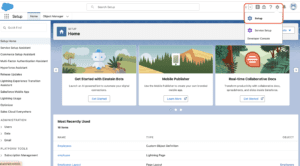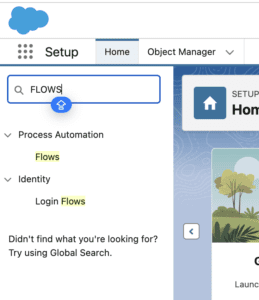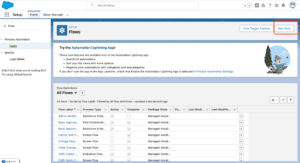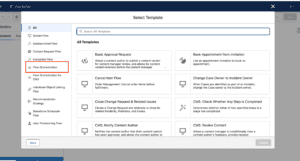In our previous blog post we had discussed about What is Flow Trigger Explorer. In these blog post we discuss about What is Flow orchestration
Contents
- 1 What is Flow orchestration
- 2 Introduction to Flow Orchestration
- 3 Key Benefits of Using Flow Orchestration
- 4 Common Use Cases for Flow Orchestration
- 5 Components of Flow Orchestration
- 6 Implementing Flow Orchestration
- 7 Future Trends in Flow Orchestration
- 8 Conclusion
- 9 FAQs
What is Flow orchestration
Introduction to Flow Orchestration
In today’s fast-paced business environment, automation is more than just a buzzword; it’s a necessity. Enter Flow Orchestration, a powerful tool in Salesforce that takes automation to the next level. But what exactly is Flow Orchestration, and why should you care? Let’s dive in.
Understanding Flow Orchestration in Salesforce
Definition and Overview
Flow Orchestration is a sophisticated feature within Salesforce that allows businesses to automate and manage complex processes across multiple departments or systems. Unlike standard workflows or process builders, Flow Orchestration provides a way to coordinate multiple flows and subflows, ensuring that each step in a business process is executed in the right order, at the right time, and by the right people.
Importance of Flow Orchestration
Why is Flow Orchestration so crucial? In essence, it provides businesses with the ability to automate not just simple tasks but entire processes that span across different teams or systems. This capability is especially valuable for organizations with complex workflows that require precise coordination.
Key Benefits of Using Flow Orchestration
Enhanced Automation
Flow Orchestration enhances the level of automation within Salesforce, allowing businesses to automate multi-step, multi-system processes. This not only saves time but also reduces the chances of errors that can occur with manual processes.
Improved Process Efficiency
By streamlining processes and ensuring that each step is completed in the correct sequence, Flow Orchestration improves overall process efficiency. This can lead to faster turnaround times and improved customer satisfaction.
Scalable Process Management
As businesses grow, so do their processes. Flow Orchestration is designed to scale with your organization, making it easier to manage increasingly complex workflows without a hitch.
Common Use Cases for Flow Orchestration
Automating Multi-Step Approvals
One of the most common use cases for Flow Orchestration is automating approval processes that involve multiple stakeholders. Instead of manually chasing approvals, Flow Orchestration ensures that each approver is notified in sequence and that the process flows smoothly from start to finish.
Streamlining Complex Business Processes
Flow Orchestration is ideal for businesses with complex, multi-step processes that require coordination across different departments. Whether it’s onboarding a new employee or launching a new product, Flow Orchestration ensures that every step is executed in the correct order.
Coordinating Cross-Departmental Workflows
For organizations that need to coordinate work across different departments, Flow Orchestration is a game-changer. It ensures that tasks are handed off from one team to the next seamlessly, reducing delays and improving collaboration.
Components of Flow Orchestration
Orchestration Plans
What Are Orchestration Plans
Orchestration Plans are the backbone of Flow Orchestration. They define the sequence of flows and subflows that need to be executed as part of a business process. Think of them as a roadmap that guides the entire orchestration.
How to Design an Orchestration Plan
Designing an effective Orchestration Plan requires a deep understanding of the business process you want to automate. It involves mapping out each step, identifying the key stakeholders, and defining the triggers and conditions for each flow.
Flow Elements in Orchestration
Decision Elements
Decision elements in Flow Orchestration allow you to create conditional logic within your flows. This means you can route the process in different directions based on certain criteria, ensuring that the flow adapts to various scenarios.
Assignment Elements
Assignment elements are used to assign tasks or records to specific users or groups within Salesforce. This ensures that the right person or team is responsible for each step in the process.
Interaction Elements
Interaction elements are designed to capture input from users or systems during the flow. This could be anything from filling out a form to confirming a decision, making the flow interactive and dynamic.
Orchestration Runs
How Orchestration Runs Work
Orchestration Runs are the actual executions of your Orchestration Plan. They track the progress of each flow and subflow, ensuring that every step is completed according to the plan.
Monitoring and Managing Orchestration Runs
Salesforce provides tools to monitor and manage Orchestration Runs, allowing you to track the progress of your workflows in real-time. This makes it easier to identify and address any issues that may arise during execution.
Implementing Flow Orchestration
Setting Up Flow Orchestration in Salesforce
Prerequisites for Flow Orchestration
Before you can start using Flow Orchestration, there are a few prerequisites you need to meet, such as having the correct Salesforce license and permissions. Additionally, a solid understanding of Salesforce Flows is essential.
Step-by-Step Setup Guide
Setting up Flow Orchestration involves several steps, including defining your Orchestration Plans, configuring your flows, and testing the orchestration to ensure everything works as expected. Salesforce provides detailed documentation to guide you through this process.
Login to Salesforce Account

Click Gear icon Navigation to Salesforce Setup

Search Quick find in Flows

Click New Flow

Select Flow Orchestration

Best Practices for Flow Orchestration
Designing Efficient Orchestration Plans
To get the most out of Flow Orchestration, it’s important to design your Orchestration Plans efficiently. This means keeping them as simple as possible while still meeting your business needs.
Testing and Troubleshooting Orchestration Flows
Testing is a critical step in implementing Flow Orchestration. By thoroughly testing your flows and Orchestration Plans, you can identify and fix any issues before they impact your business processes.
Optimizing Orchestration Performance
To ensure that your orchestration runs smoothly, it’s important to regularly review and optimize your flows. This might involve tweaking your Orchestration Plans, refining your conditions, or streamlining your flows.
Challenges and Considerations in Flow Orchestration
Complexity in Design and Implementation
One of the main challenges of Flow Orchestration is its complexity. Designing and implementing an effective orchestration requires careful planning and a deep understanding of the processes involved.
Managing Large-Scale Orchestrations
As your orchestration grows in size and complexity, managing it can become increasingly difficult. It’s important to have a solid strategy in place to handle large-scale orchestrations.
Ensuring Scalability and Flexibility
To overcome the challenges of scalability, it’s important to design your Orchestration Plans with flexibility in mind. This ensures that your flows can adapt to changes in your business processes without requiring a complete overhaul.
Maintaining Clear Documentation
Clear documentation is key to successfully managing Flow Orchestration. By keeping detailed records of your Orchestration Plans and flows, you can ensure that everyone involved in the process is on the same page.
Future Trends in Flow Orchestration
AI and Machine Learning Integration
As AI and machine learning continue to advance, we can expect to see these technologies integrated into Flow Orchestration. This will enable even more sophisticated automation and decision-making capabilities.
Advanced Analytics and Reporting
Another trend to watch is the integration of advanced analytics and reporting tools into Flow Orchestration. This will provide businesses with deeper insights into their processes and help them optimize their workflows even further.
Predictions for the Future
Increased Adoption Across Industries
As businesses continue to recognize the benefits of Flow Orchestration, we can expect to see increased adoption across a wide range of industries. From healthcare to finance, Flow Orchestration is set to become a standard tool for managing complex processes.
Integration with Emerging Technologies
Finally, we can expect to see Flow Orchestration increasingly integrated with emerging technologies such as blockchain and the Internet of Things (IoT). This will open up new possibilities for automating and managing complex, interconnected processes.
Conclusion
Flow Orchestration is a powerful tool that can transform the way businesses manage their processes. By automating complex workflows, it saves time, reduces errors, and improves efficiency
We want to more about What is Flow orchestration Click Here
FAQs
What is the main purpose of Flow Orchestration?
The main purpose of Flow Orchestration is to automate and manage complex business processes across multiple departments or systems, ensuring that each step is executed in the correct sequence.
How does Flow Orchestration differ from standard workflows in Salesforce?
Flow Orchestration differs from standard workflows by allowing for the coordination of multiple flows and subflows, making it ideal for managing more complex processes.
Can Flow Orchestration handle complex business processes?
Yes, Flow Orchestration is specifically designed to handle complex business processes that involve multiple steps, stakeholders, and systems.
What are the prerequisites for implementing Flow Orchestration?
To implement Flow Orchestration, you need the appropriate Salesforce license, permissions, and a solid understanding of Salesforce Flows.
How can I optimize my Flow Orchestration for better performance?
You can optimize your Flow Orchestration by designing efficient Orchestration Plans, testing thoroughly, and regularly reviewing and refining your flows.
In our next blog post we will discuss about What is Apex

2 thoughts on “What is Flow orchestration”